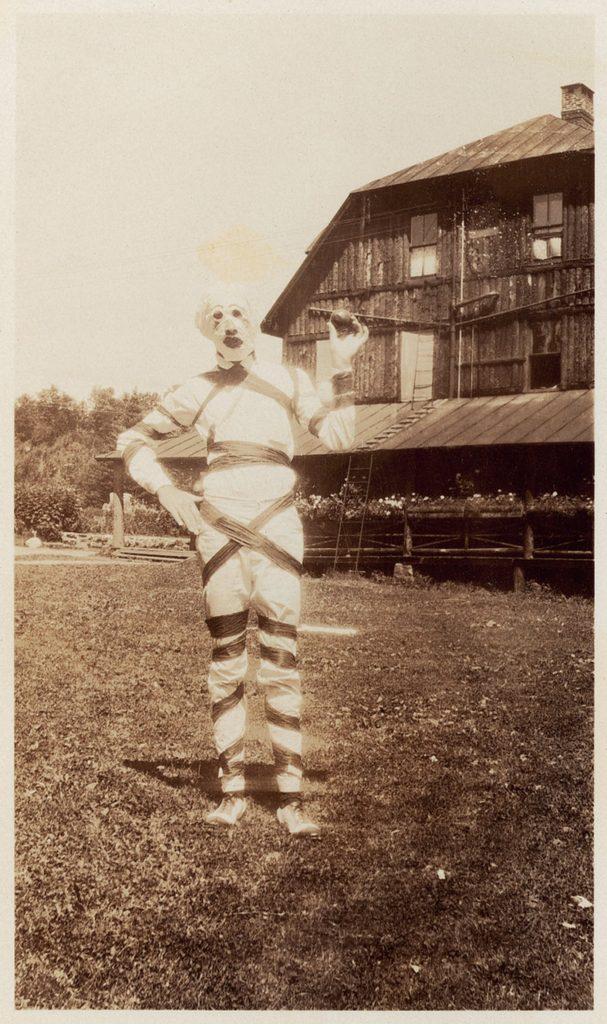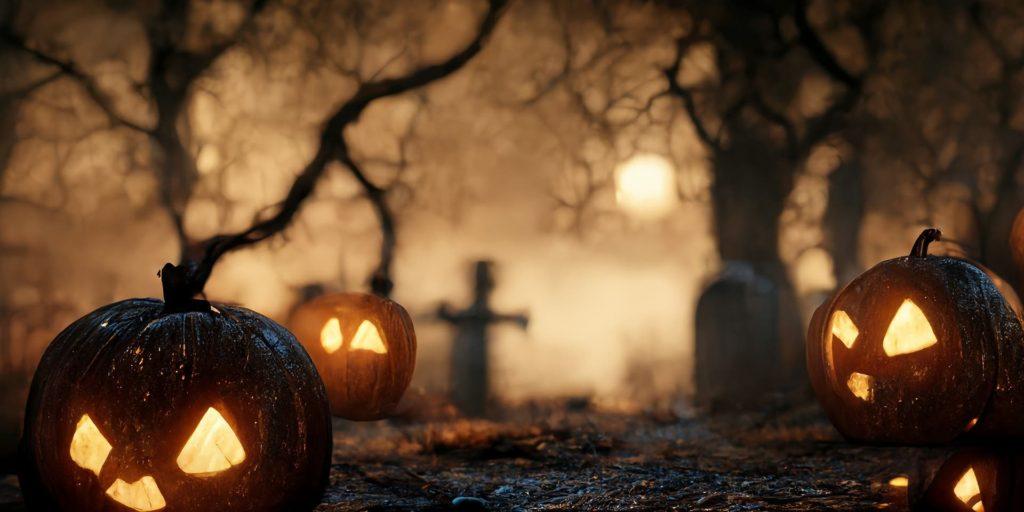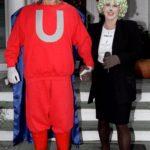Halloween: a day filled with mystery, excitement, and an undeniable sense of fun. Celebrated on October 31 each year, this holiday has a rich history that dates back to the ancient Celtic festival of Samhain. During this festival, bonfires were lit and costumes were worn to ward off ghosts. Over time, Halloween evolved into a day of activities like trick-or-treating, carving jack-o-lanterns, festive gatherings, and indulging in delicious treats. While Halloween was initially limited in colonial New England due to strict Protestant beliefs, it gained popularity in Maryland and the southern colonies, thanks in part to immigrants, particularly the Irish, who brought their traditions with them. With its origins deeply rooted in ancient practices, Halloween continues to captivate us with its enchanting mix of customs and its ever-evolving traditions.
Table of Contents
Origins of Halloween
Ancient Celtic festival of Samhain
Halloween, as we know it today, has its origins in the ancient Celtic festival of Samhain, which was celebrated over 2,000 years ago. Samhain marked the end of the harvest season and the beginning of winter. The Celts believed that on the night of October 31, the boundary between the living and the dead became blurred, allowing spirits and otherworldly creatures to freely roam the earth.
Bonfires and costumes to ward off ghosts
During Samhain, the Celts would gather around huge bonfires to ward off these roaming spirits. They also believed that wearing costumes and masks would protect them from any malevolent entities that may cross their paths. These costumes were often made from animal skins and heads, and the purpose was to both disguise and scare away any unwanted ghosts or spirits.
Incorporation of Samhain into All Saints’ Day
In the eighth century, the Catholic Church designated November 1 as All Saints’ Day, also known as All Hallows’ Day. This was an attempt to replace the pagan festival of Samhain with a Christian holiday. The evening before All Saints’ Day, October 31, became known as All Hallows’ Eve, which eventually evolved into the term we now use – Halloween. Over time, some of the traditional practices and beliefs associated with Samhain began to be incorporated into the Halloween celebrations we are familiar with today.
Halloween in America
Colonial New England’s limited celebration
In colonial New England, Halloween was not widely celebrated due to the strict Protestant beliefs held by the early settlers. The Puritans considered Halloween to be a pagan and superstitious event, and so it was largely shunned. However, as time progressed and diverse cultures began to merge, Halloween gradually made its way into the American cultural fabric.
Popularity in Maryland and southern colonies
While the celebrations of Halloween were somewhat limited in New England, they gained more popularity in the southern colonies, particularly in Maryland. It was in these areas that Halloween started to emerge as a time of community gatherings, bonfires, and revelry. The blending of different cultural influences further contributed to the growth and evolution of Halloween traditions in America.
Irish immigrants and the popularization of Halloween
It was during the 19th century that Halloween really took off in America, largely thanks to the influx of Irish immigrants. These immigrants brought their own beliefs and customs surrounding Halloween, enriching the existing traditions and making them more widespread. The Irish introduced concepts such as trick-or-treating and the carving of pumpkins, which eventually became key elements of the Halloween celebrations we see today.

Trick-or-Treating
Originated from European traditions
The practice of trick-or-treating can be traced back to various European traditions. In the Middle Ages, on All Souls’ Day (November 2), poor citizens would go door-to-door, offering prayers for deceased family members in exchange for food. This was known as “souling” and was a way to ease the passing of souls from purgatory to heaven. The tradition evolved over time to include children going from house to house, dressed in costumes, and asking for treats.
Common practice in America
Trick-or-treating became a common practice in America during the early 20th century. It was initially a community-centered activity, with neighbors giving treats to children who came knocking on their doors. The tradition grew in popularity and spread across the country, eventually becoming one of the most beloved and anticipated aspects of Halloween.
Roots in England’s All Souls’ Day parades
The tradition of trick-or-treating also has roots in England’s All Souls’ Day parades. During these parades, poor people would beg for food from wealthier families, who would then give them “soul cakes” in return. These soul cakes were small, round pastries that were thought to help release the souls of the departed from purgatory. Over time, the soul cakes evolved into the treats that are now handed out during trick-or-treating.
Halloween Traditions
Trick-or-treating
Trick-or-treating remains one of the most cherished and widespread Halloween traditions. Children, dressed in costumes ranging from spooky to adorable, go from door to door in their neighborhoods, politely asking for treats with the famous phrase, “Trick or treat!” The joy and excitement on their faces as they receive bags full of candy is what makes this tradition so special.
Carving jack-o-lanterns
Another beloved Halloween tradition is the carving of jack-o-lanterns. Originally, people would carve turnips or potatoes and place a lit candle inside to scare away evil spirits. However, when the tradition made its way to America, the pumpkin became the preferred choice due to its abundance and easier carving. Jack-o-lanterns are not only a symbol of Halloween, but they also serve as festive decorations that add an eerie and whimsical touch to homes and neighborhoods.
Festive gatherings and parties
Halloween is a time for festive gatherings and parties, where friends and families come together to celebrate the holiday. Whether it’s a spooky costume party, a haunted house party, or a pumpkin carving extravaganza, these gatherings provide an opportunity for people to connect, have fun, and immerse themselves in the Halloween spirit.
Costumes and dressing up
One of the most exciting aspects of Halloween is the opportunity to dress up in costumes and take on a different persona for the night. Whether it’s channeling your inner superhero, scary monster, historical figure, or even a beloved character from pop culture, Halloween allows you to unleash your creativity and indulge in some fun make-believe.

Evolution of Halloween
Halloween in the 1920s and 1930s
During the 1920s and 1930s, Halloween celebrations began to take on a more community-oriented nature. Parades, parties, and town-wide events became popular across the United States. These events often included costume contests, games, and even theatrical performances. Halloween evolved into an occasion for both children and adults to come together and enjoy the festivities.
Prominence of Halloween movies
Halloween movies also played a significant role in the evolution of the holiday. Films such as “Halloween” directed by John Carpenter, “Hocus Pocus,” and “The Nightmare Before Christmas” captured the essence of Halloween and became beloved classics. These movies not only entertained viewers but also helped to solidify Halloween’s place in popular culture.
Box office success of the ‘Halloween’ franchise
The success of the “Halloween” franchise further solidified the holiday’s influence on popular culture. The original 1978 film, directed by John Carpenter, became a massive box office hit and paved the way for numerous sequels, reboots, and spin-offs. The enduring popularity of the franchise demonstrates the fascination and excitement that people have for Halloween-themed movies.
Cultural Influences on Halloween
Immigrants and their impact on Halloween
Immigrants have played a significant role in shaping Halloween into the holiday we know today. From the Irish influence in America to the incorporation of traditions from various cultures, Halloween has become a blend of different customs and practices that reflect the diverse fabric of our society.
Irish influence in America
The Irish immigrants who arrived in America in the 19th century brought with them their Halloween traditions, such as dressing up in costumes and going house-to-house, collecting treats. These practices quickly gained popularity and became an integral part of Halloween celebrations across the country. The Irish influence is particularly evident in the prevalence of jack-o-lanterns, which originated from the Irish folklore of “Stingy Jack.”
Other cultural traditions incorporated
Halloween has also incorporated traditions from other cultures, such as Mexico’s Day of the Dead and the Chinese Hungry Ghost Festival. These cultural influences have added depth and richness to Halloween, making it a celebration that transcends borders and connects people from different backgrounds.

Halloween Superstitions
Placing food outside homes to keep ghosts away
One interesting Halloween superstition is the practice of placing food outside homes to appease or keep ghosts away. This belief stems from ancient Celtic customs, where people would offer food to wandering spirits as a means of protection. The idea was that the spirits would be satisfied with the offerings and not cause any mischief or harm.
Celtic tradition of wearing masks for protection
Another Halloween superstition with Celtic origins is the tradition of wearing masks. The Celts believed that wearing masks would help them blend in with the spirits and avoid being recognized or harmed by them. This practice eventually evolved into the modern-day tradition of dressing up in costumes and masks during Halloween.
Halloween Celebrations Worldwide
Variations of Halloween traditions in different countries
While Halloween is predominantly celebrated in the United States, there are variations of the holiday in different countries around the world. In Mexico, for example, the Day of the Dead is celebrated on November 1 and 2, honoring deceased loved ones with colorful festivities and altars. In Japan, the Obon festival is held in August to remember and honor ancestors. These variations showcase the diverse ways in which different cultures approach the concept of honoring the dead.
Similarities and differences in Halloween customs
While Halloween customs may differ from country to country, there are often similarities that connect them. The underlying theme of remembering and honoring the deceased is prevalent in many cultures, as is the use of costumes and festive gatherings to mark the occasion. Despite the cultural variations, Halloween serves as a unifying holiday that celebrates our shared fascination with the supernatural and the mysteries of the afterlife.

Halloween’s Commercialization
Consumerism and Halloween
In recent years, Halloween has become increasingly commercialized. Retailers capitalize on the holiday, offering a wide array of Halloween-themed merchandise, decorations, costumes, and treats. The focus on consumerism has transformed Halloween into a multi-billion-dollar industry, with people spending significant amounts of money each year to celebrate the holiday.
Impact of commercialization on Halloween traditions
While commercialization has undoubtedly brought accessibility and convenience to Halloween celebrations, it has also led to a shift in focus. With the emphasis on purchasing and consuming, some argue that the original meaning and spirit of Halloween are being overshadowed. Critics believe that the emphasis on commercialism takes away from the genuine connection with the holiday’s history and cultural significance.
Controversy surrounding Halloween merchandise
The commercialization of Halloween also raises issues of cultural appropriation and insensitivity. Costumes that perpetuate stereotypes or mock different cultures have sparked controversy and prompted discussions about the importance of cultural sensitivity. It is essential for individuals to recognize the potential harm in appropriating cultures and to make informed, respectful costume choices.
Halloween and Cultural Appropriation
Debate over cultural appropriation during Halloween
The debate over cultural appropriation comes to the forefront during Halloween, as people often don costumes that reflect cultural or ethnic identities that are not their own. This can perpetuate harmful stereotypes and disrespect the cultures being represented. Many argue that it is crucial to approach Halloween with cultural sensitivity and to avoid appropriating or mocking other cultures.
Respectful costume choices and cultural sensitivity
Respecting the cultural origins and significance of Halloween, as well as the traditions and beliefs associated with different cultures, is essential. Educating ourselves about the history and customs of various cultures can help us make thoughtful choices regarding costumes and avoid inadvertently disrespecting or appropriating other people’s identities. By embracing cultural sensitivity, we can ensure that Halloween remains a celebration that honors tradition while promoting inclusivity and understanding.
In conclusion, Halloween has its roots in ancient Celtic traditions and has evolved over centuries to become the beloved holiday we celebrate today. From the festive gatherings and costumes to the commercialization and cultural influences, Halloween has become a time to both honor the past and embrace the present. As we navigate the modern complexities surrounding the holiday, it is essential to approach Halloween with respect, cultural sensitivity, and a genuine appreciation for the traditions that make it so special. So, go ahead and indulge in a little spooky fun, but always remember to respect the history and the diverse cultures that have contributed to the magic of Halloween.


